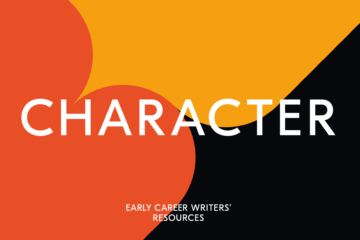I’m obsessed with finding the right tool for the job: my main source of stress is witnessing other people determinedly using inappropriate tools or processes, usually because they (incorrectly) think they don’t have time to fix it. When it comes to writing, my go-to tool for years has been Scrivener. I usually talk to people about how Scrivener is really useful, focusing on the usual key features:
It keeps all your research and notes in one place!
It makes it easier to edit a completed draft!
It’s got a good no-distractions writing mode!
It’s true that Scrivener has many excellent features for making a writer’s life easier. What I’ve become aware of only recently is that it has also made a significant contribution to making my writing better.
Structure
A traditional word processor, such as Word or Google Docs, presents your text in a linear, start-to-finish fashion. It prioritises simulating pages, showing how your document will print out. This is very useful when writing letters or work-related reports.
For the novel writer, or even the short story writer, the number of pages is largely irrelevant, because how your manuscript fits onto A4 paper has absolutely nothing to do with how it will appear in an ebook, paperback or hardback. The useful metric for writers is word count, which is how you know whether you’re writing a short story, a novella, a novel or a fantasy novel.
Scrivener eschews visual representation of pages in favour of emphasising story structure. The somewhat abstract notion of ‘pages’ fades away, because this is your manuscript: pages only matter when it’s finished and has gone through the lengthy process of becoming a book.
In Scrivener, the focus is on the structural composition of your entire story. What this means is largely up to each individual writer. I tend to split my novels into distinct parts, each of which contain multiple chapters — a fairly common design. In Scrivener this is easily represented with each part having its own folder, inside of which are individual chapters. I can jump between these chapters with a single click, make new ones or even view them all as a single, flowing manuscript.
Over time this has influenced my writing, making it easier to structure the narrative. Rather than having a single, gigantic, monolithic manuscript in Word, or an unknown blank page, instead I can begin to shape the book before I’ve written the words. As I progress through the novel, I can easily see the shape of it by glancing at the contents list: I’m always anchored clearly in the story, and the chapter-based structure of Scrivener helps me to remember what I’ve already written, rather than my own text becoming increasingly alien to me as I go beyond the 100k mark.
Pacing
This in turn actively improves the pacing of the novel, even while creating the first draft. Judging pacing in a linear Word-style document is hard, because it’s difficult to visualise the overall shape of the story. In Scrivener, even while I’m writing a specific chapter I still have an eye on the overall pace and what’s come before.
I’m continually shifting the story, based on what’s come before: it becomes very simple at a glance to know how long it’s been since a particular character last appeared, or when the next big plot beat is approaching. This is all stuff that would normally get finessed and fixed in the second draft edit, but Scrivener makes it possible to zone in on the best version of the book right from the start. Which isn’t to say that editing and multiple drafts aren’t needed — it’s just that Scrivener puts you ahead of the curve.
Research, ideas and development
Before I used Scrivener, my research would be scattered across various notebooks and digital files and folders. If I had an idea I’d jot it down, but usually in a place that was disconnected from the main manuscript, which then made it very easy to forget.
Scrivener keeps all of your research and notes in the same project file, alongside your main manuscript. It seems like a small convenience but it’s had a big impact on my writing: by removing the inconvenience of having to remember where I’ve put all my notes, the result is that I reference them far more often. I’ll even have pertinent notes open in one Scrivener panel while I’m writing the text in another.
This makes the writing process faster but it also helps me be more accurate and dig deeper into themes and character, because all my scattered thoughts are contained and presented to me as and when I need them. I write serialised, online fiction so this is especially important as it keeps me on track and avoids plot holes and inconsistencies.
Ultimately, it has served to remove the inconveniences and practical irritations inherent to writing long form stories, allowing me to focus on the storytelling itself.
Scrivener 3 is already out on Mac and should be appearing on PC very soon. I can’t wait to get my hands on it and dig into its new features. If you’re not already using it, that’ll be the perfect time.
You can read my serialised novel, The Mechanical Crown, which is written in Scrivener, over on Wattpad.
Photo by Aaron Burden on Unsplash



0 Comments